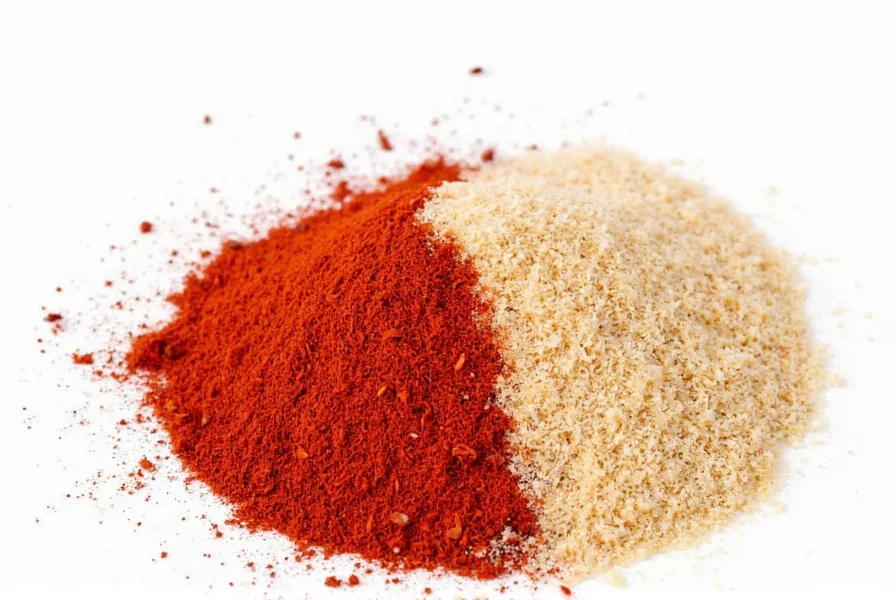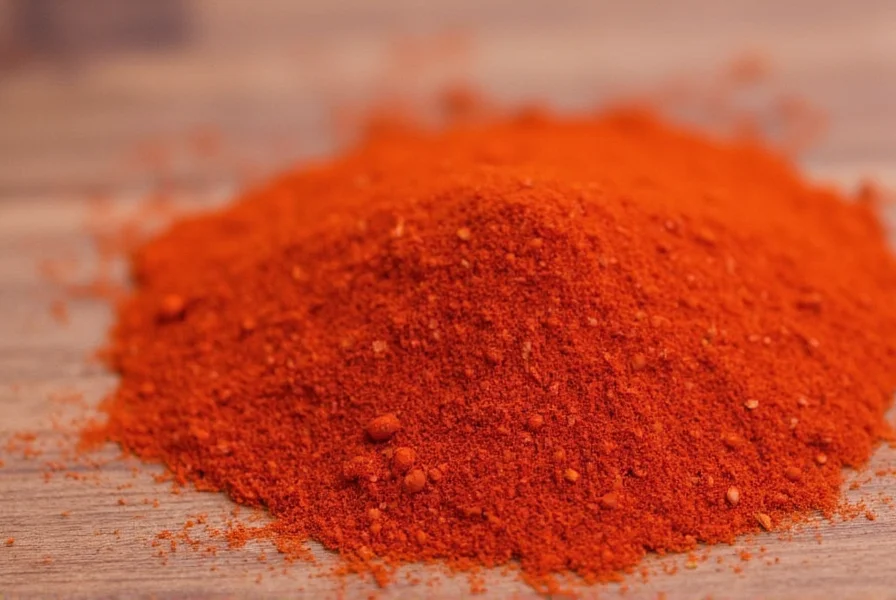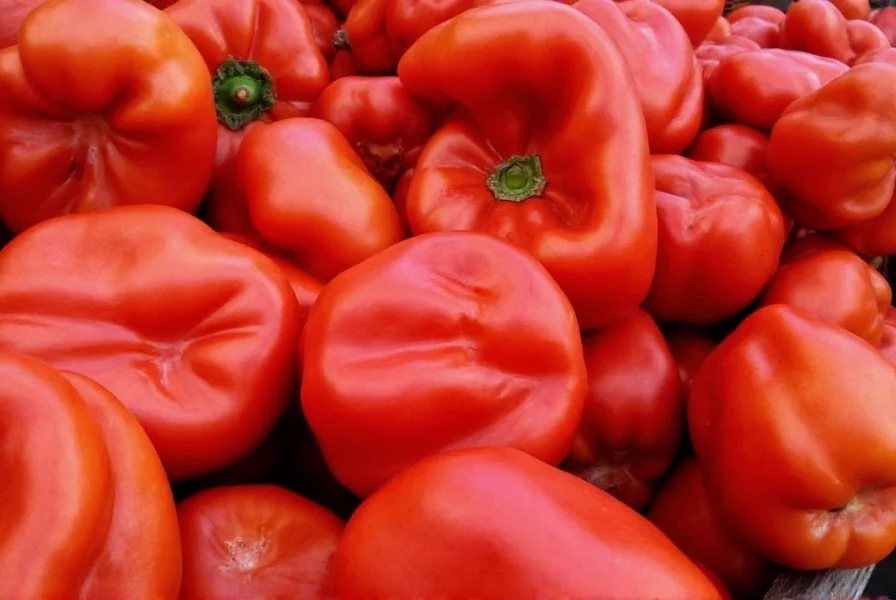Many home cooks mistakenly believe paprika is used solely for its vivid red color, but this common spice delivers a nuanced flavor profile that varies significantly by type. Understanding paprika's taste characteristics can transform your cooking and help you select the right variety for your recipes.
The Distinct Flavor Profile of Paprika
Paprika is made from ground peppers, primarily Capsicum annuum varieties, which gives it a flavor spectrum that spans from mild and sweet to intensely smoky or spicy. Unlike some spices that mainly provide heat, paprika offers layered tasting notes including:
- Sweet paprika: Earthy, slightly fruity notes with subtle pepper flavor
- Smoked paprika: Rich, campfire-like smokiness with varying heat levels
- Hot paprika: Noticeable heat with underlying sweet pepper notes
What does paprika taste like compared to other spices? While chili powder often contains additional spices like cumin and garlic, pure paprika showcases the unadulterated flavor of dried peppers. Its taste is more complex than many realize—think of it as the difference between fresh bell peppers (sweet paprika) versus roasted or dried hot peppers (smoked or hot varieties).

Regional Varieties and Their Unique Tastes
Not all paprika is created equal. The growing conditions, pepper varieties, and processing methods create significant taste differences:
| Variety | Origin | Flavor Profile | Best Uses |
|---|---|---|---|
| Hungarian Sweet | Hungary | Fruity, earthy, mild pepper flavor | Goulash, potato salads, deviled eggs |
| Spanish Smoked (Pimentón) | Spain | Deep smokiness, varying heat levels | Paella, roasted vegetables, chorizo |
| American Standard | USA | Mild, slightly sweet, less complex | General seasoning, color enhancement |
| Hot Paprika | Various | Noticeable heat with sweet pepper base | Spicy rubs, chili, hot sauces |
How Cooking Affects Paprika's Flavor
Understanding how paprika's taste develops during cooking is crucial for maximizing its flavor potential. Unlike some spices that benefit from being added early, paprika's delicate flavor compounds can degrade when exposed to high heat for too long.
For the most vibrant paprika flavor profile, consider these techniques:
- Add sweet paprika toward the end of cooking to preserve its delicate flavor
- Bloom smoked paprika in warm oil first to release its aromatic compounds
- Never burn paprika—it turns bitter almost immediately
- Combine with acidic ingredients like tomatoes to balance its earthiness
When wondering why does paprika taste different in various dishes, consider that its flavor interacts uniquely with other ingredients. In creamy sauces, it provides subtle warmth; in tomato-based dishes, it enhances umami; and in dry rubs, it contributes both flavor and beautiful color.

Practical Tips for Using Paprika
Now that you understand what does paprika taste like, here's how to use it effectively:
- Store in a cool, dark place—light and heat degrade its flavor compounds
- Replace every 6-12 months as flavor diminishes over time
- Start with 1/4 teaspoon per serving and adjust to taste
- Combine sweet and smoked varieties for complex flavor layers
- Use Hungarian sweet paprika for authentic Central European dishes
Is paprika just for color? Absolutely not. While its vibrant hue is certainly valuable, the spice contributes substantial flavor that forms the foundation of many global cuisines. From the rich depth of Spanish paella to the comforting warmth of Hungarian goulash, paprika's taste is anything but one-dimensional.
FAQ
Does paprika taste like辣椒 (chili)?
Paprika and chili powder share pepper origins but differ significantly. Pure paprika has a more nuanced flavor profile ranging from sweet to smoky, while chili powder typically includes additional spices like cumin and garlic. Sweet paprika offers earthy, mild pepper notes without significant heat, whereas hot paprika provides moderate warmth. The taste difference is similar to comparing fresh bell peppers (sweet paprika) versus dried hot chilies (chili powder).
Why does my paprika taste bitter?
Bitter paprika usually results from burning the spice during cooking. Paprika's delicate flavor compounds degrade quickly when exposed to high heat. To prevent bitterness, never add paprika directly to a hot, empty pan. Instead, bloom it in warm (not smoking) oil, or add it later in the cooking process. Old or improperly stored paprika can also develop off-flavors—replace paprika every 6-12 months for optimal taste.
Can I substitute paprika for chili powder?
You can substitute paprika for chili powder, but the flavor profile will differ significantly. Paprika provides color and pepper flavor without the additional spices in chili powder. For every tablespoon of chili powder, use 2 teaspoons paprika plus 1/2 teaspoon cumin and a pinch of garlic powder. Remember that sweet paprika won't provide heat, so add cayenne if you need spiciness. Smoked paprika makes the closest substitute for recipes where smokiness is desired.
Does paprika taste different when cooked?
Yes, paprika's flavor transforms significantly when cooked. Raw paprika has bright, fresh pepper notes that mellow and deepen with heat. Sweet paprika develops richer earthiness, while smoked paprika's campfire notes become more pronounced. However, overheating causes paprika to turn bitter—its ideal temperature range is 250-350°F (120-175°C). For best results, add sweet paprika toward the end of cooking, while smoked varieties benefit from brief blooming in warm oil to release their aromatic compounds.











 浙公网安备
33010002000092号
浙公网安备
33010002000092号 浙B2-20120091-4
浙B2-20120091-4